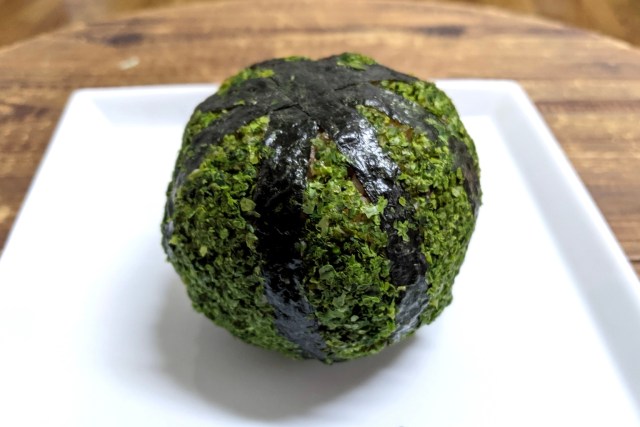
Some seeds you can’t spit out.
From 3 August the Seibu department store in Ikebukuro, Tokyo is holding a Midsummer Gourmet Festival. One of the standout items for sale at this event are onigiri rice balls that look just like watermelons.
That seemed like a fun summer take on a classic Japanese food, so our veteran reporter Mr. Sato went down to check it out. However, when he got on the train to Ikebukuro, he was hit with a sudden wave of shame and remorse.
Most writers, when looking back on their body of work, often find things that they wrote which makes them shudder with revulsion today, having grown and developed their skills. In Mr. Sato’s case, an article was written on 13 July 2010 titled “I tried eating watermelon on rice.”
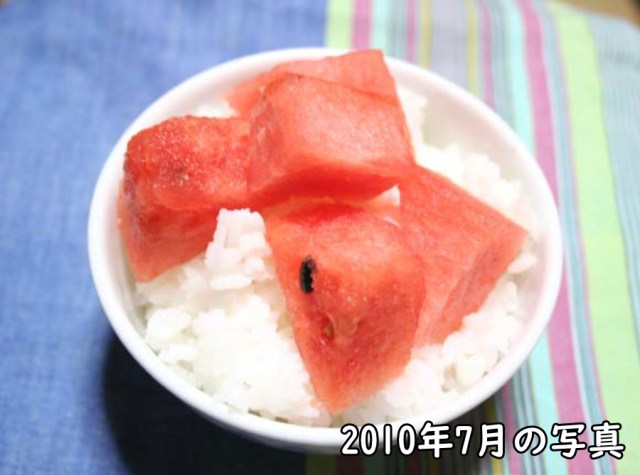
It was a truly boneheaded idea which a young, inexperienced Mr. Sato came up with that putting diced watermelon on rice might actually taste good. When it didn’t, he decided to double down on his theory and added soy sauce and vinegar to the concoction, ultimately deluding himself into thinking that made it better. Still not satisfied with his horrible premise, he then proceeded to make a watermelon egg salad, which also was not good.
▼ Cub reporter Mr. Sato, eating watermelon egg salad
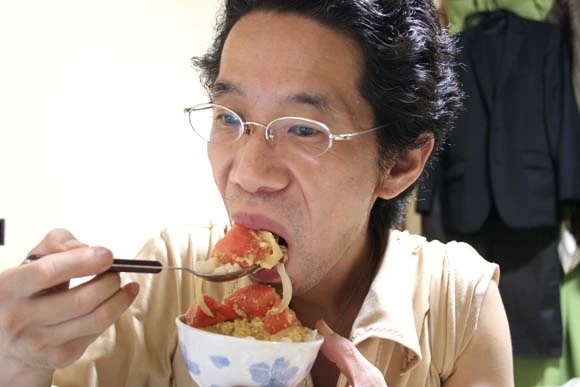
Ever since that catastrophe, he vowed to never write about watermelon and rice together again. Of course, there aren’t many opportunities to write about watermelon and rice together, so he had forgotten about that vow until just now, as he was heading out to buy a watermelon onigiri.
This lingering feeling of regret hung over him even when arriving at Yunotani Tawara Daimyo in the basement of Seibu, where the watermelon rice balls are sold.
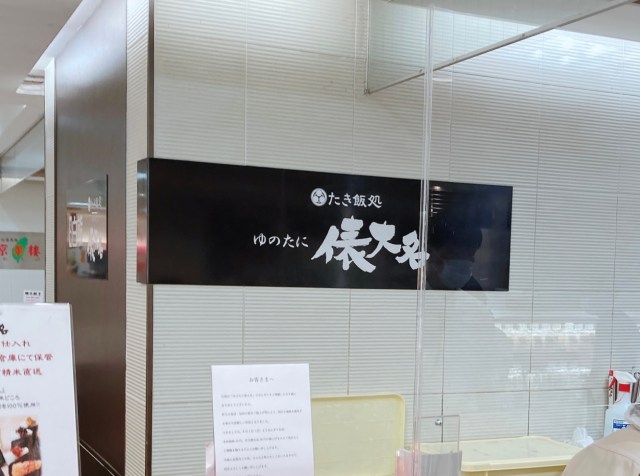
Mr. Sato bought a Watermelon Rice Ball for 650 yen (US$5) as well as Edamame & Salty Kelp and Sockeye Salmon ones for 250 yen ($2) each. At this store, all onigiri are made with Koshihikari rice from Uonuma, Niigata Prefecture, so they sell at a bit of a premium compared to other rice balls.
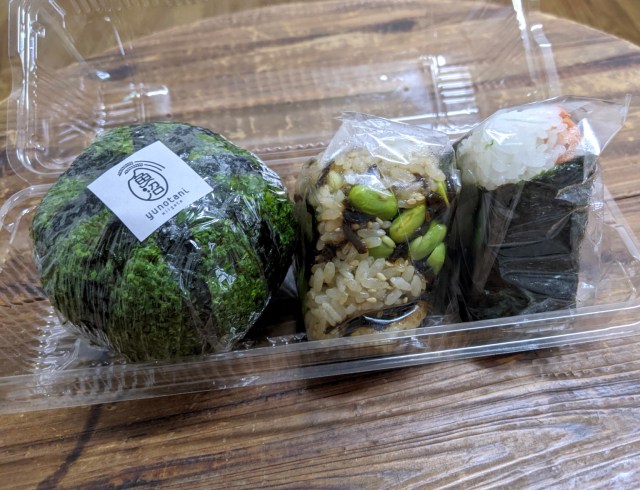
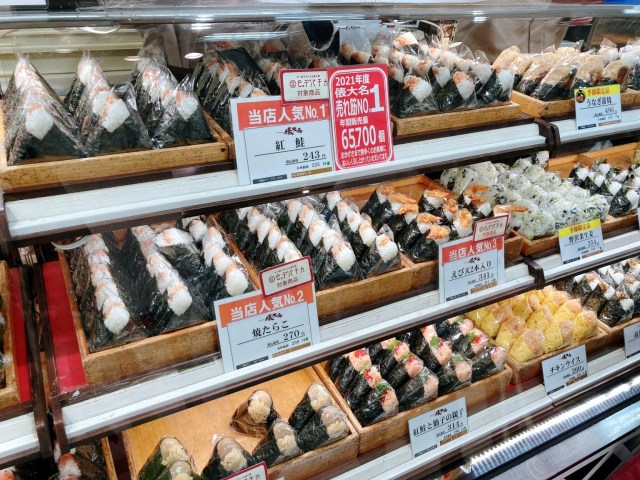
The Watermelon Rice Ball, however, was particularly pricey, owing to its relatively large size of about 10 centimeters (3.9 inches) in diameter. Its delightful design was a luxury as well. Yunotani used two different types of seaweed to accomplish the watermelon-like stripes on the outer surface.
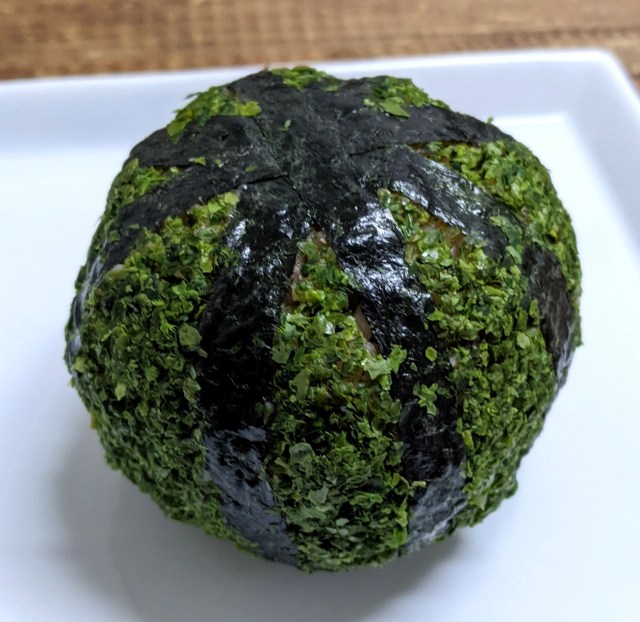
Mr. Sato still had no idea what was inside though. Did they have the gall to put in actual pieces of watermelon like he had 12 years ago? He shivered at the thought of it as he bisected the onigiri for examination.
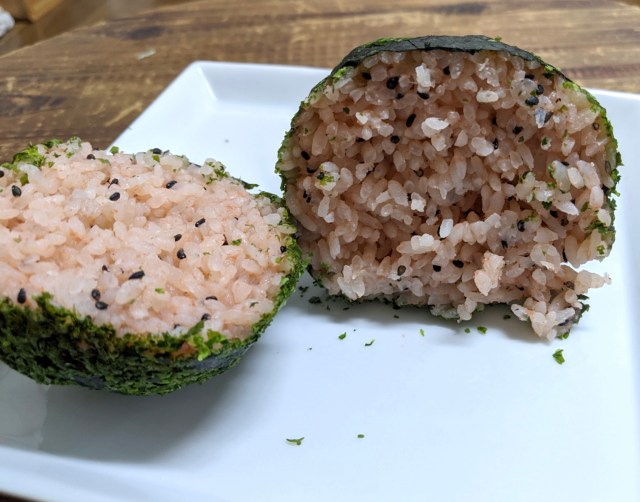
Our reporter was relieved to find that Yunotani was not as foolish as he had been, and refrained from putting real watermelon with rice. Still, the inside also had a very watermelon aesthetic. Spicy pollock roe, known as mentaiko was used to give the rice a reddish hue while maintaining a beloved onigiri taste, and little black sesame seeds were used to simulate the watermelon seeds.

It tasted great too, largely due to the fine Koshihikari rice’s sublime texture that was enhanced by the extra layer of seaweed. Mr. Sato thought that this was how someone with real creativity would fuse watermelon and rice together.
There’s still time to try a Watermelon Rice Ball while the Midsummer Gourmet Festival continues until 22 August. For those who can’t get one — whatever you do — don’t put actual watermelon on rice. You’ll only live to regret it.
Store information
Yunotani Tawara Daimyo / ゆのたに俵大名
Tokyo-to, Toshima-ku, Minamiikebukuro 1-28-1, Food Hall First Basement
東京都豊島区南池袋1-28-1 食品館地下1階
Hours: 10 a.m. – 9 p.m.
Photos © SoraNews24
● Want to hear about SoraNews24’s latest articles as soon as they’re published? Follow us on Facebook and Twitter!

No hay comentarios:
Publicar un comentario